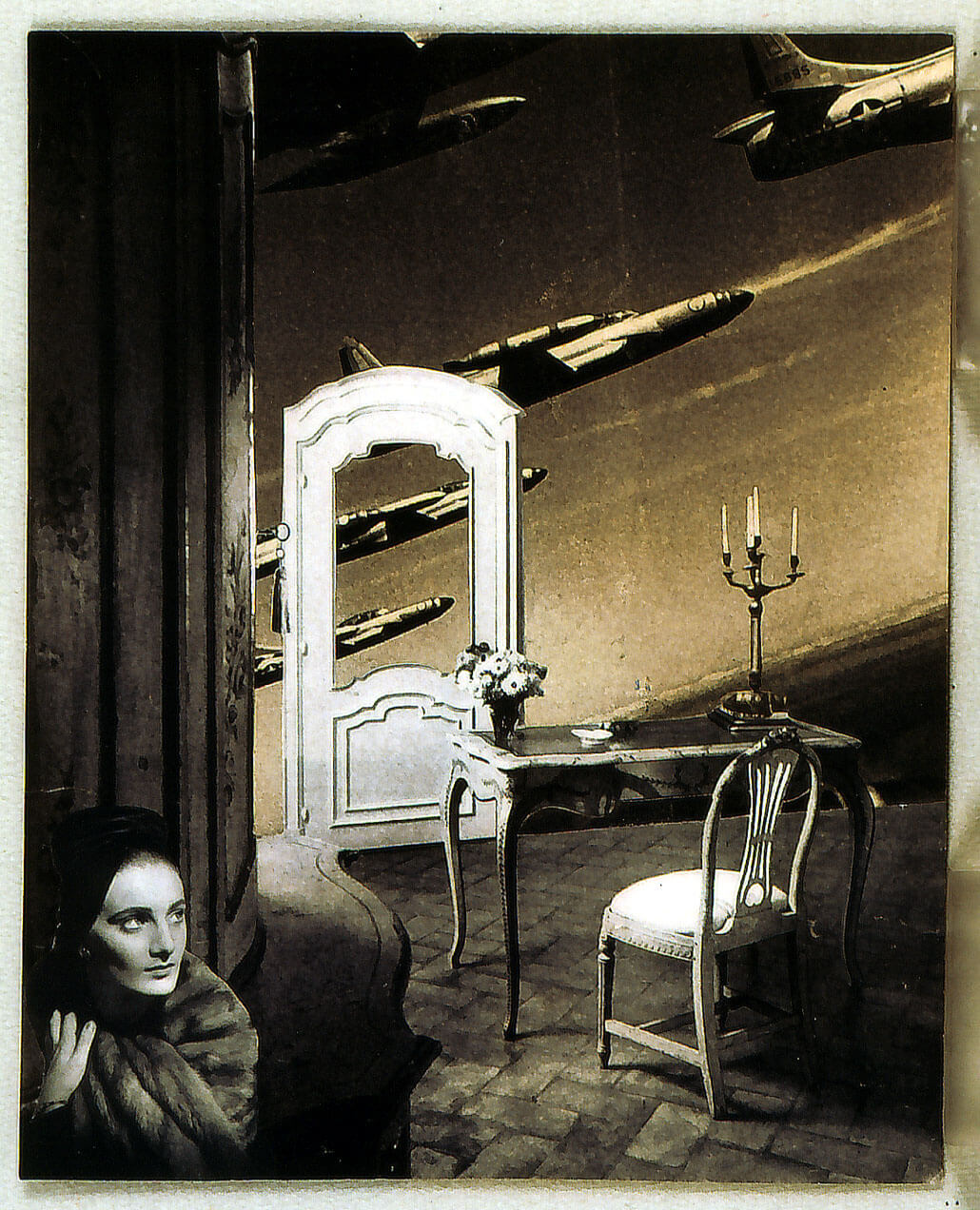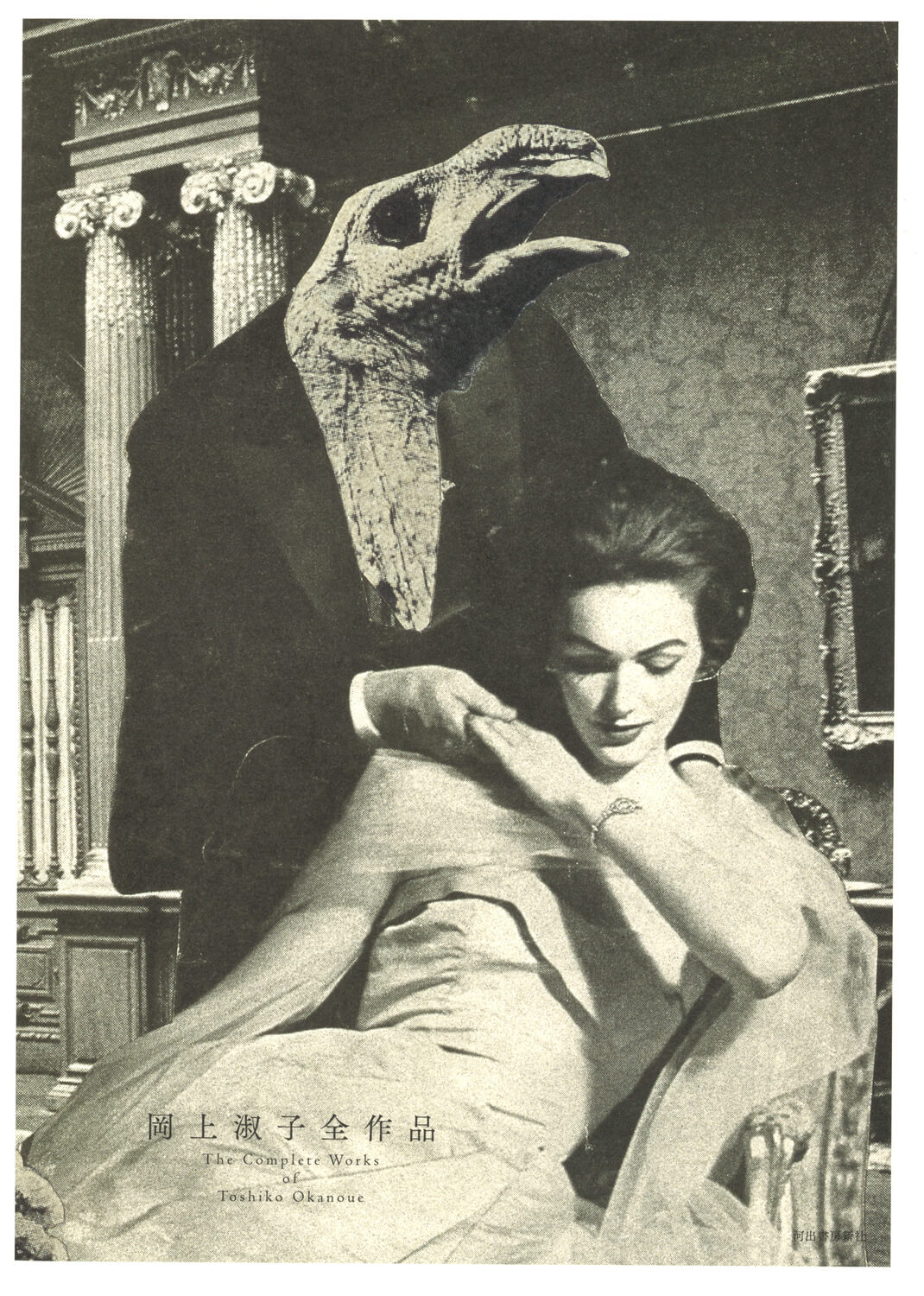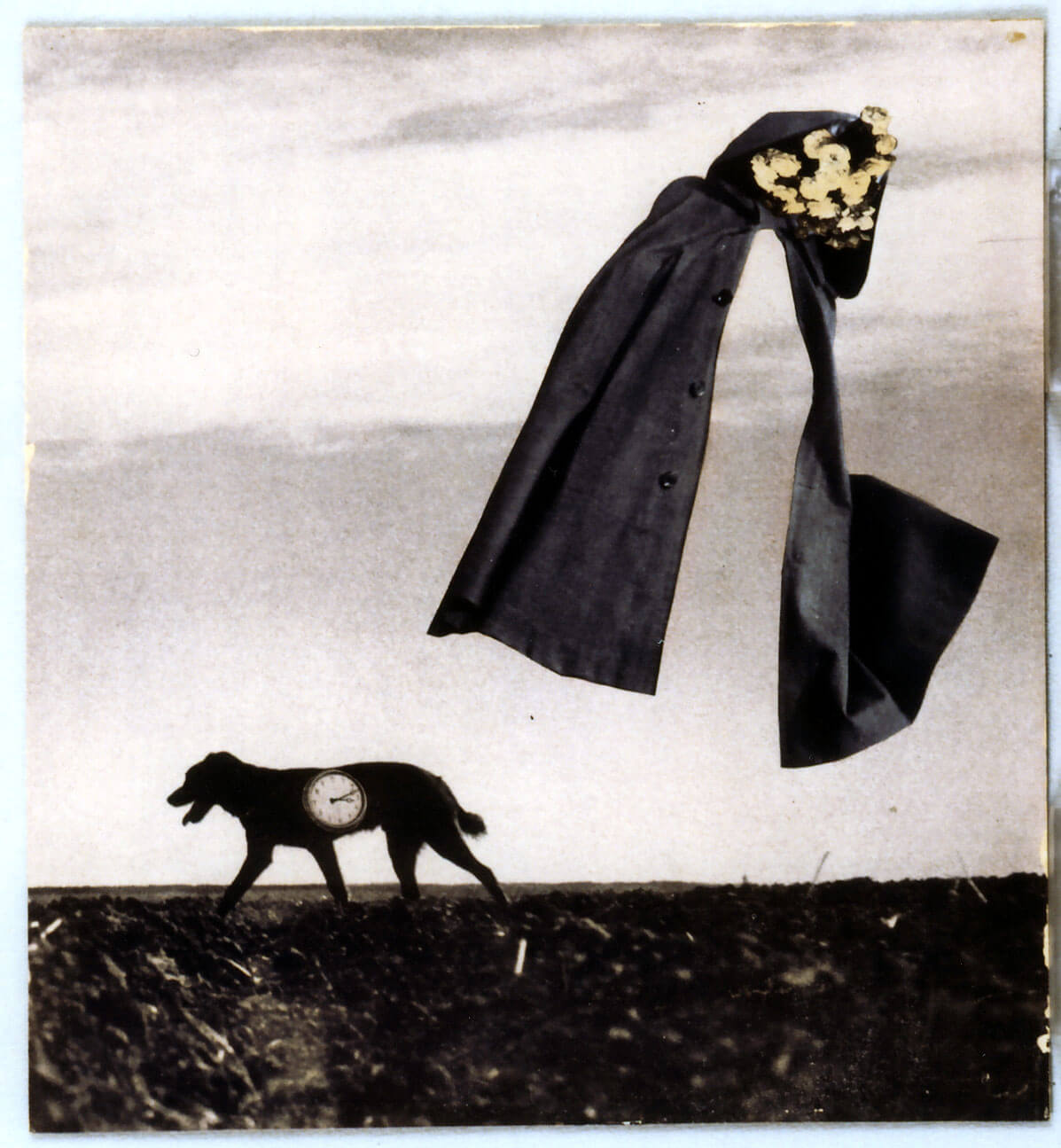Toshiko Okanoue’s Surrealist Collages
Using images from Western fashion magazines, the artist developed her style that defies all sense of proportion.

‘Premonition’ © Toshiko Okanoue, Collection of the Museum of Art, Kochi
Born in Kochi in 1928, Japanese artist Toshiko Okanoue cut her teeth at the Bunka Gakuin school in Tokyo. While studying fashion design, she soon developed a passion for collage, an art in its own right and one which has earnt her worldwide fame.
After the war, in the early 1950s, the artist escaped from the heavy, morose atmosphere by losing herself in Western fashion magazines such as Vogue, Harper’s Bazaar and Life. Instinctively, she began cutting out, gathering and then sticking together body parts and objects of all kinds that she selected with care.
An icon of Japanese surrealism
Her art plays with proportion in an unsettling manner that throws her pieces totally off balance, showcasing asymmetric bodies knocking together with animals and various objects. Toshiko Okanoue thus set foot in the surrealist movement without really realising it.
In general, surrealist paintings depict a dream in a figurative manner, categorically breaking with the conformity advocated by contemporary society. Surrealism aims to free the artist from the constraints of reason, inviting them to create their work in an unpredictable way. Although Toshiko Okanoue was unaware that the surrealist movement even existed at the time, she is now one of the figureheads of the movement in Japan.
Work that spent almost 40 years out of the spotlight
It wasn’t until 1952, when she met artist and poet Shuzo Takiguchi, that her career really came together. The latter was an iconic figure in the surrealist movement in Japan and educated her by showing her the works of Max Ernst and other artists, which proved to have a strong influence on her art. Over a period of six years, Toshiko Okanoue became increasingly prolific, with over one hundred pieces to her name. Her dreamlike collages juxtapose contradictory images and seek to create their own vocabulary.
The artist held her first exhibition in 1953, but her divorce in 1957 put a sudden end to her career. It took almost forty years for her work to resurface. The custodian of the Metropolitan Museum of Photography in Tokyo uncovered her unique collages in the 1990s and, in doing so, propelled her career. Since then, her work has been recognised for its valuable contribution to the Japanese avant-garde movement, and museums (including the MoMa in New York) have paid homage to the artist by exhibiting her work in all four corners of the globe.
Photo Collage, The Miracle of Silence (2019), a book of collages by Toshiko Okanoue published by Seigensha.

‘The Complete Works of Okanoue Toshiko’ / Layout: B5 size, hardback, 192 pages. / Expected price: 5000JPY, plus tax. / Publication: January, 2018 / Enquiries: Kawade Shobo Shinsha

‘A Long Journey’ © Toshiko Okanoue, Collection of the Museum of Art, Kochi
TRENDING
-
The Tattoos that Marked the Criminals of the Edo Period
Traditional tattoos were strong signifiers; murderers had head tattoos, while theft might result in an arm tattoo.

-
The Story of Sada Yacco, the Geisha who Bewitched Europe
Described by Dazed magazine as the first beauty influencer, she has been restored to her former glory since 2019.

-
Chiharu Shiota, Red Threads of the Soul
Last year, more than 660,000 people visited the retrospective 'Chiharu Shiota: The Soul Trembles' exhibit at the Mori Art Museum.

-
Japanese Left-field Pop From The CD Age, 1989-1996
‘Heisei No Oto’, a compilation of hidden gems in the unspoken depths of Japanese pop, reveal blissful moment of technological possibility.

-
‘Shojo Tsubaki’, A Freakshow
Underground manga artist Suehiro Maruo’s infamous masterpiece canonised a historical fascination towards the erotic-grotesque genre.





